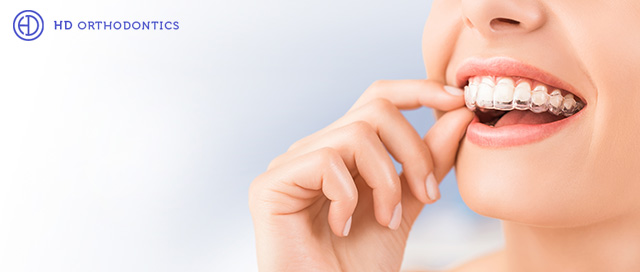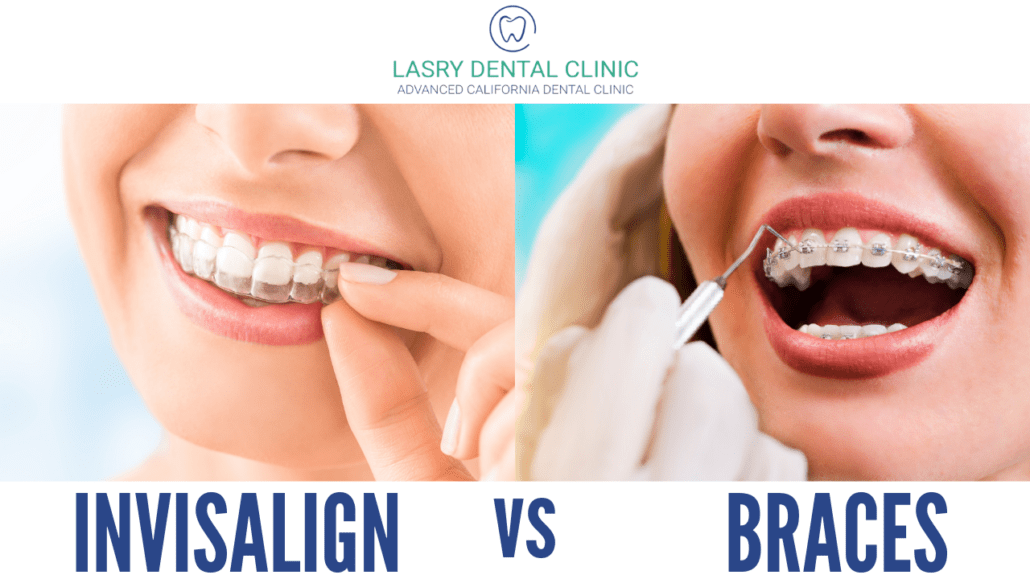Invisalign vs. Standard Braces: Which Choice Is Right for You?
When considering orthodontic therapy, the selection in between Invisalign and standard braces offers several important elements that merit mindful assessment. Invisalign uses a discreet alternative with detachable aligners, while standard braces provide a much more visible yet reliable solution for extreme imbalance.
Introduction of Treatment Choices

On the other hand, standard braces are composed of metal braces and cords that are bound to the teeth. This approach uses constant stress over time to accomplish placement. While effective for intricate orthodontic problems, typical dental braces require routine visits for modifications and can position difficulties in keeping oral hygiene because of the problem of cleaning up around cables and brackets.
Both options have their merits, and the option commonly pivots on details dental conditions, lifestyle preferences, and individual compliance. Ultimately, seeking advice from an orthodontic specialist is crucial for identifying one of the most ideal therapy strategy customized to private requirements. Understanding the nuances of each choice can considerably influence the overall success of orthodontic therapy.
Visual Factors To Consider
A considerable element affecting the selection in between Invisalign and standard dental braces is the aesthetic allure each treatment provides. Invisalign aligners are crafted from clear plastic, making them essentially invisible when used.
In contrast, standard braces include metal brackets and cords, which can be a lot more recognizable. While developments in orthodontic modern technology have led to the development of smaller sized braces and tinted elastics, conventional braces still preserve a more noticeable account. For some people, the visibility of dental braces might prevent them from looking for necessary treatment.
Ultimately, the option between Invisalign and traditional braces may rest on individual choices concerning visual appeals. Individuals who prioritize discernment typically favor Invisalign, while those who are much less concerned regarding visibility might opt for traditional dental braces. Recognizing the visual effects of each choice is critical for making an educated choice that straightens with one's way of living and choices.
Comfort and Convenience

In terms of benefit, Invisalign aligners are removable, allowing people to appreciate their preferred foods without limitation and maintain optimal oral health. Cleaning and flossing are simplified, as the aligners can be secured throughout browse this site these regimens, whereas conventional dental braces need careful maneuvering around braces and cables.
Furthermore, Invisalign's modern system enables less orthodontic brows through. Patients typically get multiple collections of aligners at once, which can improve the therapy procedure go to my blog and decrease time spent in the orthodontist's chair. In comparison, traditional braces demand normal changes, making them much less practical for those with hectic timetables. Invisalign. In general, the comfort and ease of Invisalign make it an attractive selection for many people looking for orthodontic treatment.
Treatment Period and Performance
While both Invisalign and standard braces are efficient in correcting dental imbalances, the period of therapy can differ significantly between both choices. Generally, Invisalign treatment can take anywhere from 12 to 18 months, relying on the complexity of the situation. The clear aligners function by slowly moving teeth right into their wanted positions, and routine follow-ups with an orthodontist aid make certain progression stays on course.
In comparison, typical braces often call for a longer dedication, normally ranging from 18 months to 3 years. This results from their fixed nature and using brackets and cables, which can be more effective for intricate situations and serious misalignments (Invisalign). The treatment performance of traditional braces is well-documented, as they permit exact changes and better control over tooth activity
Ultimately, the option between Invisalign and standard braces might pivot on both the expected treatment period and the specific oral concerns handy. Consulting with an orthodontist is essential, as they can give customized referrals based upon specific requirements, ensuring the chosen approach straightens with preferred outcomes and timeframes.
Expense Contrast and Insurance Policy Options
Expense plays a considerable duty in the decision-making process for people considering orthodontic therapy, whether going with Invisalign or standard dental braces. On average, the price of Invisalign varieties from $3,000 to $8,000, while typical dental braces generally cost between $2,000 and $6,000. Aspects affecting these expenses consist of the complexity of the situation, the period of therapy, and geographical place.
Insurance protection can substantially impact out-of-pocket expenses. Lots of oral insurance policy plans supply partial protection for orthodontic therapies, but the specifics can vary widely. It is crucial for patients to evaluate their insurance plans to figure out the level of insurance coverage for either alternative. Typically, conventional dental braces may be extra frequently covered by insurance policy strategies compared to Invisalign, which More Help some insurance companies classify as a cosmetic treatment.
Furthermore, several orthodontic methods use flexible layaway plan, making both treatment choices much more obtainable. Clients must make inquiries about potential funding options and price cuts for upfront payments. Reviewing the overall cost, consisting of insurance coverage benefits and payment plans, is vital for making an informed choice that straightens with both aesthetic preferences and spending plan considerations.

Conclusion
In summary, the choice in between Invisalign and traditional braces hinges on multiple variables, including aesthetic preferences, comfort, therapy period, and cost. Invisalign provides a very discreet, detachable option that assists in oral hygiene and dietary versatility, while traditional braces may be preferable for complicated dental issues and frequently come at a lower rate factor. Eventually, consultation with an orthodontist is important to examine individual scenarios and figure out one of the most proper treatment option for accomplishing ideal oral alignment.
When taking into consideration orthodontic therapy, the option in between Invisalign and standard dental braces offers several vital aspects that merit mindful examination.Contrasting Invisalign and standard dental braces reveals distinctive treatment choices for orthodontic adjustment.While both Invisalign and conventional braces are reliable in correcting oral misalignments, the period of therapy can differ dramatically in between the two options.Expense plays a significant duty in the decision-making process for people considering orthodontic therapy, whether opting for Invisalign or traditional braces.In summary, the choice between Invisalign and traditional braces hinges on multiple aspects, consisting of visual choices, convenience, therapy duration, and price.